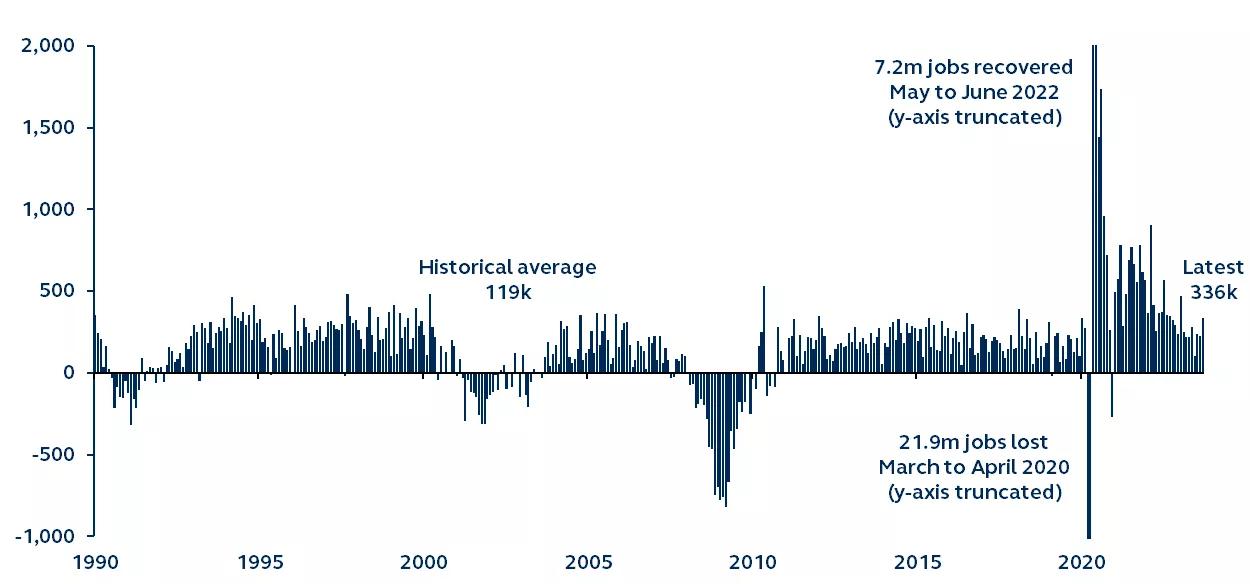Hiring picked up sharply in September, reversing signs of a cooling labor market. In September, the economy added 336,000 nonfarm payroll jobs, above the average gain of 267,000 over the previous 12 months. These payroll gains were nearly double consensus expectations of 170,000 new jobs. The unemployment rate held steady at 3.8% in September after ticking up from 3.5% the prior month. While September’s strong jobs report reverses earlier weakness, it also increases the odds of additional Federal Reserve (Fed) rate hikes and the possibility of overtightening. This underscores our view that the most likely economic scenario is a mild recession.

Payroll gains
Monthly change in non-farm payrolls, Thousands, seasonally adjusted, 1990–present

Source: Clearnomics, Bureau of Labor Statistics, Principal Asset Management. Data as of October 6, 2023.
- Total nonfarm payroll employment increased by 336,000, stronger than the previous month’s 227,000. Total nonfarm employment was revised up for both July and August by 119,000. After revisions, the 3-month average payroll gain in September was 266,000, well above the historical average. The labor force participation rate was also stable at 62.8% but the under-employment rate, which includes individuals who have dropped out of the labor force, improved slightly from 7.1% to 7.0%.
- Many sectors benefited from payroll gains in September. Private goods-producing industries added 29,000 jobs, service industries gained 234,000, and the government payrolls grew by 73,000. All major industries, except for the information sector, added jobs last month. Leisure and hospitality and private education and health services continued to build on strong job gains in recent months, adding 96,000 and 70,000 jobs respectively.
- Average hourly earnings growth continued to moderate in September. The year-over-year increase in wages declined to 4.2% from 4.3%. For two consecutive months, the annualized month-over-month rate has been below 3%, bringing the 3-month annualized rate of wage gains to 3.4%. Moderate wage gains should provide relief to inflationary pressures.
September’s strong employment gains were a deviation from the gradual cooling of the labor market that had occurred throughout much of the year. The rates implied by fed funds futures rose sharply immediately following the jobs report, reflecting the greater possibility of another rate hike. The most likely scenario continues to be a mild recession as the Fed attempts to walk the line between a strong economy and persistent inflation.
Investing involves risk, including possible loss of principal. Past performance is no guarantee of future results.
Views and opinions expressed are accurate as of the date of this communication and are subject to change without notice. This material may contain ‘forward-looking’ information that is not purely historical in nature and may include, among other things, projections and forecasts. There is no guarantee that any forecasts made will come to pass. Reliance upon information in this material is at the sole discretion of the reader.
The information in the article should not be construed as investment advice or a recommendation for the purchase or sale of any security. The general information it contains does not take account of any investor’s investment objectives, particular needs, or financial situation.
3156039


